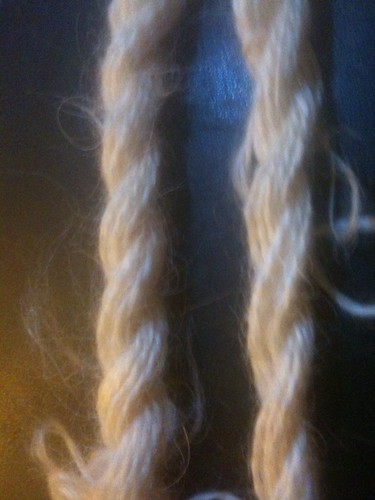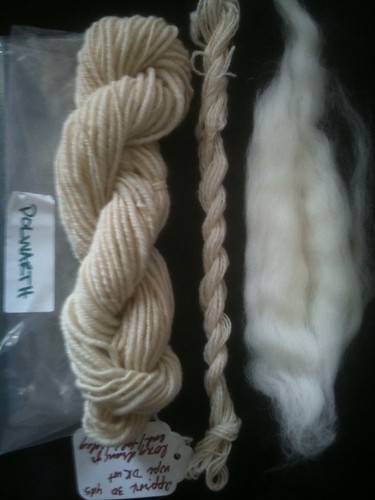Black Norwegian is not listed is any of my reference books. The label said "Louet Black Norwegian" which their website says comes from Norwegian sheep. A google search did not find a specific breed called "Black Norwegian", however, I did find an "Old Norwegian Sheep" that I believe is the same (it comes in colors including black).
Norwegian sheep are an old Primitive breed of Northern short-tailed sheep. They are dual-coated with fine undercoat wool.
http://www.ansi.okstate.edu/breeds/sheep/oldnorwegian/index.htm
My sample was spun worsted to semi-worsted from the end of commercial top. This has a four inch staple length, and is a very easy spin, drafting smoothly with little to no pre-drafting. VERY nice wool, soft and smooshy, and I think this would make lovely sweater yarn.

Navajo Churro
Churro sheep were brought to the American Southwest in the mid-1500's by the Spanish.
They are dual-coated breed with a coarse, long outercoat (4-14 inch staple, 38+ micron count), and a fine, short undercoat (2-4 inch staple, 22-23 micron count).
My sample came from fleece with an average lock length of five inches, varying from four to seven inches. The undercoat is very soft and silky. I hand combed the locks and spun semi-worsted from the fold for a 2ply yarn. Combing was minimal since I wasn't trying to separate the outer and undercoats, just align the fibers. My singles spun easily when I switched to spinning from the fold instead of from the end.
I liked this fiber and look forward to processing the rest of the fleece at a later date. I'd like to try separating the coats but I think to do that properly I might need different combs. I'd also like to try carding it.












































